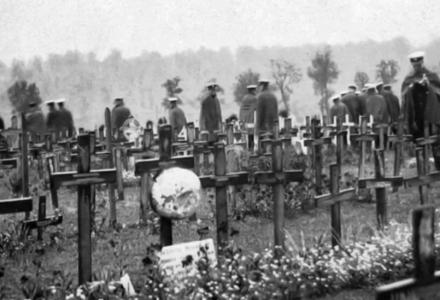Edith Moorhouse was born in Undera, a small town outside Kyabram in country Victoria. Her mother died in 1891 at the age of thirty-eight; her father the year later. At the age of six Edith was left an orphan—as were her four siblings. All of them moved to Echuca where they came under the care of their uncle, Henry Moorhouse. As for many women of her generation, nursing offered Edith a chance of self-reliance and independence. She trained at Mooroopna General Hospital for three years and was still a resident at Mooroopna when she enlisted as a staff nurse in 1915.
In over three years of service, Edith Moorhouse nursed men back to health in Australia, Alexandria, Suez and France. She also worked on hospital ships, freighting sick, wounded and sometimes dying men across the Mediterranean, back to England and even home to Australia. In 1918 she returned to France, was posted to the first Australian Casualty Clearing station and promoted to Sister.
Conditions in northern France were appalling. The hospitals around Lille swelled with the sick and wounded and the site of the casualty clearing stations shifted hurriedly with every battle. And like the wounded, the weather gave no respite. It was ‘filthy’ and the nurses and their charges were often ‘cold and miserable’.
In October 1918, Edith Moorhouse fell gravely ill. Even so, she refused to leave her post, tending the ‘battered remains of humanity’ left in her care. ‘She would not give in until she could not move’, a fellow nurse remembered, ‘and it was too late [then] to save her precious life’. Edith survived long enough to see the end of fighting but died of pneumonia two weeks after the signing of the Armistice. She was thirty-three years of age.
Over thirty Australian and New Zealand nurses died on active service. Their names are honoured beneath a memorial window in York Minster. But the simple epitaph chosen for Edith Moorhouse reminds us of the constraints under which all these women served.
SHE DID WHAT SHE COULD.
For full attribution of sources, suggestions for further reading and an extended version of the story itself see ‘She hath done what she could: Edith Moorhouse’ in Bruce Scates, Rebecca Wheatley and Laura James, World War One: A History in 100 Stories (Melbourne, Penguin/Viking, 2015) pp. 154-156; 358.



